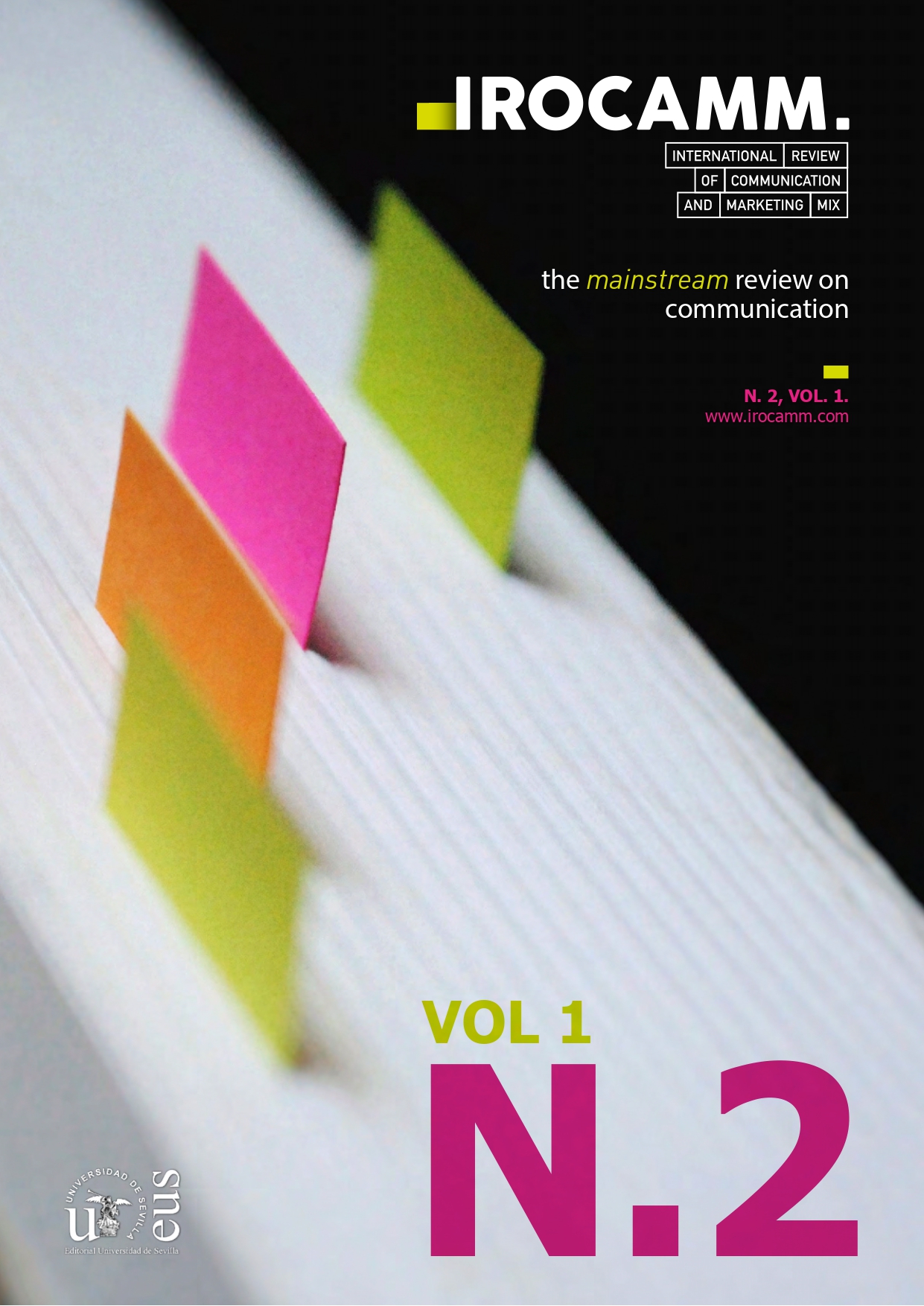Resumen
In this text, the potential of art for retail stores is explored. No matter what product or service the store is offering than the art can always be an effective tool for pursuing certain communication goals. Being one of the most ancient communication forms, art is a wide field in which emotion plays a key role. That is why the retail sector can take advantage of the proved effectiveness of art while transferring its suggested feeling to the spatial management of the store. Thus, in this study, four different possibilities of artistic decoration in stores are described: (1) the retail management as an artistic activity, (2) the retail store as a museum space, (3) the retail store and the (integrated or recreated) artworks, and (4) the retail store and the artistic movements.Citas
Bellido-Pérez, E; Jiménez-Marín, G. and García Medina, I. (2017). Arte y propaganda en el Barroco sevillano: La construcción de la marca de la Iglesia católica. En: I. García Medina and V. Tur-Viñes, Bilateral dialogues between researchers from Glasgow Caledonian University (UK) and University of Alicante (Spain) (pp. 46-58). Alicante: Mundo Digital.
Berger, R. (1976). Arte y comunicación. Barcelona: Gustavo Gili.
Caro Gonzalez, F. J. and Jiménez-Marín, G. (2006). La Arquitectura Comercial Como Soporte para la Creación de Identidad en el Sector de la Moda, Trípodos: Revista Digital de Comunicació. Núm. EXTRA 2006: 235-244
Chin, A. (2012). Kiki van Eijk: Hermès windows at Bijenkorf Amsterdam. Retrieved from: http://www.designboom.com/design/kiki-van-eijk-hermes-windows-at-bijenkorf-amsterdam/
Corporate.Dominos (n.d.). Pizz-art: Domino’s turns stores into galleries to launch new italiano ‘Masterpizzas’. Retrieved from: http://corporate.dominos.co.uk/news/pizz-art-domino%e2%80%99s-turns-stores-into-galleries-to-launch-new-italiano-%e2%80%98masterpizzas%e2%80%99
Crewe, L. (2016). Placing fashion: Art, space, display and the building of luxury fashion markets through retail design. Progress in Human Geography, 40(4): 1-19.
Dewey, J. (2008). El arte como experiencia. Barcelona: Paidós.
Eco, U. (1990). Obra abierta. Barcelona: Ariel.
Eco, U. (2005). La definición del arte. Barcelona: Destino.
Independent.co.uk (2006). A cultural revolution on Oxford Street: East meets West End windows. Retrieved from: http://www.independent.co.uk/news/uk/this-britain/a-cultural-revolution-on-oxford-street-east-meets-west-end-windows-523801.html
Hagtvedt, H. and Patrick, V. (2008). Art and the brand: The role of visual art in enhancing brand extendibility. Journal of Consumer Psychology, 18: 212–222.
Hagtvedt, H. y Patrick, V. (2011). Turning art into mere illustration: concretizing art renders its influence context dependent. Personality and Social Psychology Bulletin, 20(10): 1–9.
Jiménez-Marín, G. (2012). Arte y Publicidad. Análisis de campañas publicitarias apoyadas en el uso del arte. Saarbrücken: EAE publishing.
Jiménez-Marín, G. (2016). Merchandising y retail: comunicación en el punto de venta. Sevilla: Advook.
Larkin, J. (2016). ‘All Museums Will Become Department Stores’: The Development and Implications of Retailing at Museums and Heritage Sites. Archaeology International, 19: 109–121.
Panofsky, E. (1987). El significado de las artes visuales. Madrid: Alianza Editorial.
Pérez-Andújar, J. (2003). Salvador Dalí: a la conquista de lo irracional. Madrid: Algaba
Portas, M. (1999). Windows. The art of retail display. Londres: Thames & Hudson Ltd.
Providenceoptical.net (2014). A new Outlook. Retrieved from: http://providenceoptical.net/?p=1852
Read, H. (1973). El significado del arte. Madrid: Magisterio Español.
Tatarkiewicz, W. (2008). Historia de seis ideas. Arte, belleza, forma, creatividad, mímesis, experiencia estética. Madrid: Tecnos.
International Review Of Communication And Marketing Mix proporciona un acceso sin restricciones a su contenido desde el momento de su publicación en esta edición electrónica, y por lo tanto es una revista de acceso abierto. Los originales publicados en esta revista son propiedad de la Universidad de Sevilla y es obligatorio citar su origen en cualquier reproducción total o parcial. Todos los contenidos se distribuyen bajo una licencia Creative Commons - No comercial - Attribution Share Alike 4.0 (CC BY-NC-SA 4.0). Esto debe indicarse expresamente de esta manera cuando sea necesario. Puede consultar la versión informativa y el texto legal de la licencia.
Los autores que publican en esta revista están de acuerdo con los siguientes términos:
- La cesión de derechos se hace bajo la licencia Creative Commons.
- Los autores pueden hacer por separado arreglos adicionales para la distribución no exclusiva de la versión de la obra publicada en la revista (por ejemplo, colocándola en un depósito institucional o publicándola en un libro), con un reconocimiento de su publicación inicial en esta revista.
- Se permite y alienta a los autores a difundir su trabajo electrónicamente (por ejemplo, en repositorios institucionales o en su propio sitio web) antes y durante el proceso de presentación, ya que ello puede dar lugar a intercambios productivos, así como a una citación más temprana y amplia de los trabajos publicados.
- La difusión de los artículos se llevará a cabo en las redes sociales generales, ResearchGate, Mendeley, Academia.edu, Cosis, e-lis y otras bases de datos o repositorios de textos completos en Internet con los que la revista establece un acuerdo para su difusión y visibilidad.
- El derecho de autor es de dos tipos: los derechos morales y los derechos patrimoniales. Los derechos morales son prerrogativas perpetuas, irrenunciables, intransferibles, inalienables, inembargables e imprescriptibles. Los derechos patrimoniales se refieren a los beneficios obtenidos por el uso o la divulgación de las obras. La IROCAMM - Revista Internacional de Comunicación y Marketing Mix está autorizada exclusivamente a realizar o autorizar por cualquier medio la utilización, distribución, difusión, reproducción, adaptación, traducción o transformación de la obra...
International Review Of Communication And Marketing Mix does no cobra honorarios por la presentación de trabajos, ni tampoco por la publicación de sus artículos.

